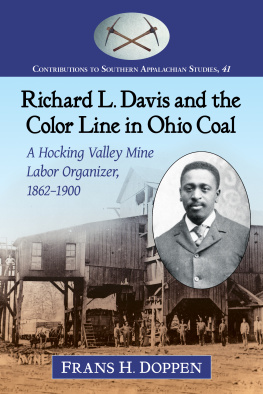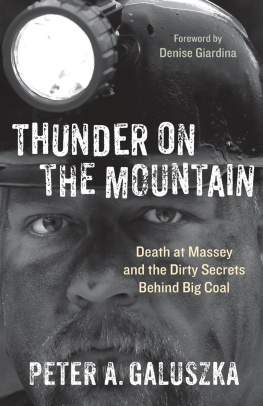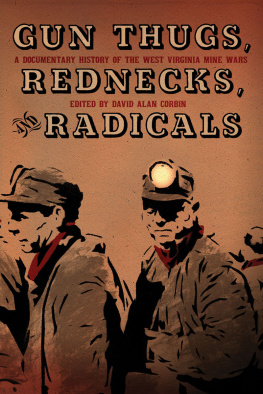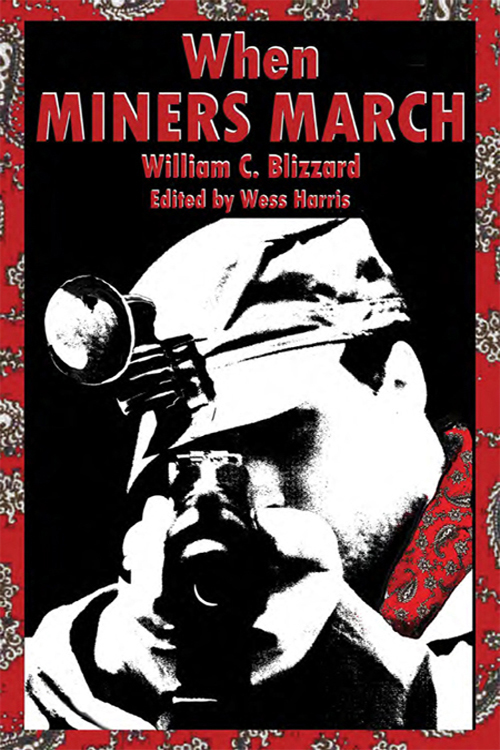
When Miners March is a volume not to be missed by labor historians, scholars of Appalachian Studies, and persons interested in West Virginia history. A primary source written in easily accessible style, William C. Blizzards work provides a dramatic account of West Virginia miners struggle to build the UMW.
James J. Lorence, Professor Emeritus,
Department of History
University of Wisconsin
Marathon County
This is a very accessible and salt-of-the-earth review of what West Virginia miners confronted on their march toward winning dignity and respect in their profession. A real treasure for anyone looking to understand the struggles of labor in the mining industry.
Mark A. Martinez, Professor and Chair
Department of Political Science
California State University
Bakersfield
I urge every person who believes in justice for working families to read Bills work. He understood that the fight for a better life for the working class did not end at Blair Mountain.
Cecil Roberts, President
United Mine Workers of America
William C. Blizzards When Miners March should be studied at every college and university level. There are lessons to be learned.
Ross Ballard II, Professor
Department of Education
Johns Hopkins University
This engaging book, by the son of a leader of one of the fiercest moments of coal miner struggles in the United States, is a valuable contribution to the preservation of a history that should be honored and never lost. Read it and weep, and cheer.
Harry Cleaver, Professor
Department of Economics
University of Texas at Austin
Each morning when I arise early to write, the Postscript to When Miners March posted above my desk, serves as my mission statement:
Some readers, some scholars, may protest this writers method of departing from academic objectivity', and rooting enthusiastically for the coal miners.
That is too bad, but we have no apologies. We want our writing to be read, not grow musty in the library of any elite coterie. This is a peoples history, and if it brawls a little, and brags a little, and is angry more than a little, well, the people in this book were that way, and so are their descendants.
Ron Moore,
DC Special Interests Examiner
Current events notably the struggle for unions to remain relevant and empowered, and coals role in the climate change crisis make the writings both relevant and remarkable.
Kari Lydersen,In These Times
Full texts of reviews as well as information on ordering books, audio dramas, music sound tracks, or scheduling the When Miners March Traveling Museum can be found at our web site,whenminersmarch.com.

Photo taken in the mid-1950's By William C. Blizzard
Coal operators used this cannon against Union miners in what became known as the Battle of Blackberry City. In the early 1950's, Bill Blizzard and lifelong friend, Charley Payne, talked away the cannon from a coal operator without firing a shot. After the capture for the Union, it was placed in Bills yard until he died in 58. It then went to Charley and several generations of his family. They have made it available for display in the When Miners March Traveling Museum.
That thing was once the coal operators substitute for collective bargaining.
Bill Blizzard and Charley Payne
Charleston Daily Mail, 2/10/1954
WHEN MINERS MARCH
William C. Blizzard
Copyright: Appalachian Community Services 2010
All Rights Reserved
ISBN: 978-1-60486-300-0
Library of Congress Control Number: 2009912466
PM Press
PO Box 23912
Oakland, CA 94623
Cover Design,
Front Photo Art,
and Book Layout
by Tom Rhule
Charleston, WV
CONTENTS
Foreword
It is strange to me that no one has written this book before.
Thus begins Thunder in the Mountains, Lon Savages now classic 1984 treatment of the West Virginia mine wars of 1920-21. Twenty years later, Robert Shogan begins his 2004 work, The Battle of Blair Mountain as follows: When I first became interested in the Battle of Blair Mountain in the early 1960's, I thought it remarkable that so little had been written about this unprecedented episode in our development as a nation. Incredibly, the book you now hold was written more than thirty years before Savages book and predates Shogans work by more than half a century. William C. Blizzard penned this definitive history of coal miners in West Virginia in the 1940's and early 50's.
The 1921 Battle of Blair Mountain in which thousands of miners formed an army to unionize the southern West Virginia coal fields is a story oft told. Introducing his work, The West Virginia Mine Wars, David Alan Corbin cites Mother Jones, Frank Keeney, Fred Mooney, and Sid Hatfield as heroes of the miners struggle and rightfully so. Yet looking at the crisis on Blair Mountain, we find Mother opposing the march; Kenney and Mooney necessarily absent due to trumped up murder charges; and Sid Hatfield, murdered before the march, also missing the big event. Bill Blizzard was the chief official protagonist in the drama played out around Blair Mountain. He led the Red Neck Army as they marched toward Logan County in 1921, hoping to bring the U.S. Constitution and the UMWA to the scab mines of Logan and Mingo counties. His eventual service to the Union spanned more than 40 years from the early battles on Cabin and Paint Creeks (1912-13) until his retirement from the Union as President of District 17 in 1955. In that year he asked John L. Lewis for permission to retire from the greatest Union in the world. Bill Blizzard was the lead defendant in the trials following the miners march on Blair Mountain. Coal operators sought to hang some 200 miners and literally pronounce a death sentence on both the UMWA and the labor movement across our nation. Bill Blizzard was to be the first to swing, but he did not comply.
This work was originally offered in serial form titled, Struggle and LoseStruggle and Win! in the newspaper, Labors Daily, of late 52 and early 53. The political climate of the time ensured scant attention would be paid to articles in any such publication. Further, as an employee of Labors Daily, William C. Blizzard was not given a byline. Later scholars simply did not know that their books had already been written. The earlier text is published here in book form for the first time. The only changes from the original are essentially cosmetic and made by William C. Blizzard following publication of the first edition and his successful eye surgery. More than half a century in existence, this work is not only a history of coal miners in West Virginia; it is an important piece of American history. For Bill Blizzards son to have written this book is of tremendous import to scholars, but we must not let a fancy pedigree shade the life of William C. Blizzard himself. While long ago a UMWA member, William C. Blizzard spent his life primarily as a writer and photographer. Learning his trade at Columbia University, the author was a skilled craftsman. This meticulously researched work is a smooth read; never is there a doubt as to where Blizzards sympathies lie. Perhaps here the genes do come into play. Opinion, supported by the facts of the situation and humor to lighten many grim realities, are spices that add zest to the entre served herein.










